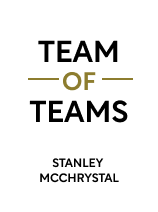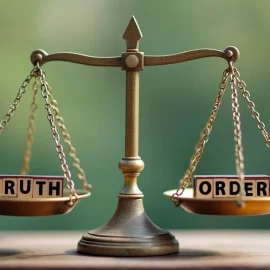

This article is an excerpt from the Shortform book guide to "Team of Teams" by Stanley McChrystal. Shortform has the world's best summaries and analyses of books you should be reading.
Like this article? Sign up for a free trial here .
What is emergent intelligence? What are some real-world examples of the emergent intelligence phenomenon?
Emergent intelligence is the way intelligent properties come to be as a result of the interactivity of many low-level processes. Some examples of emergence include the ant colony structure, the free market economy, and the human consciousness.
Keep reading to understand emergent intelligence.
What Is Emergent Intelligence?
Emergence refers to the way something comes together as a result of many low-level actions without a coordinating force. Order emerges from the bottom up as opposed to being directed top-down.
An example of emergence is Adam Smith’s concept of the “invisible hand,” where free markets are shaped by the individual actions of many buyers and sellers rather than a centralized design. Similarly, an ant colony’s structure is the result of the instinctive behavior of millions of individual ants doing various things such as digging and foraging. The colony comes together although no individual ant has the brainpower to organize it. (It’s a myth that the queen manages an ant colony—her sole purpose is to reproduce.)
In teamwork, innovative solutions can emerge through the interactivity of the members without direction from authority. Whether you have multiple computers (networking) or multiple people acting as a unit (referred to as group cognition), you can solve bigger, more complex problems with emergent intelligence.
Building a team requires both the visible hand of authority integrating the members and the invisible hand of emergence creating organic solutions. For example, SEAL (Sea, Air and Land Forces) training is designed to foster emergent intelligence to solve problems that can’t be predicted or planned for.
Perspective: Empowered Teamwork Is Intelligent
In the wake of the Flight 173 crash in Portland, United Airlines implemented a teamwork program called Crew Resource Management (CRM), which involved training crews to be assertive, training captains to be less authoritarian, and building teams with trust and purpose to prepare crews to act effectively in a crisis.
While some pilots were initially dismissive of the program, it paid off in 1989, when United Flight 232 blew an engine, and debris damaged the movement of wing flaps. There was no protocol for handling the problem because the chance of it happening was considered to be extremely remote. Lacking any steering capability, the crew, which had CRM training, improvised a solution involving manipulating the thrust of the two remaining engines. The plane crash-landed but 185 of 296 on board survived. Subsequently, the FAA mandated CRM training for all airlines.
CRM-type empowerment programs have been developed in other settings—for example, operating rooms, oil rigs, and nuclear power plants—for handling complex challenges.

———End of Preview———
Like what you just read? Read the rest of the world's best book summary and analysis of Stanley McChrystal's "Team of Teams" at Shortform .
Here's what you'll find in our full Team of Teams summary :
- How General Stanley McChrystal transformed the U.S. Joint Special Operations Task Force
- What teams that operate well can offer to an organization
- How the team of teams organizational model helped bring down a major Al Qaeda leader






